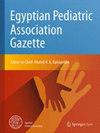Egyptian paediatric kidney transplantation pre-transplant guidance highlights on donor and recipient assessment (R. N. 364)
IF 0.5
Q4 PEDIATRICS
引用次数: 0
Abstract
Kidney transplantation for chronic kidney disease (CKD) in children is the best treatment option. It needs special medical and surgical expertise highly skilled in management of pediatric age group. Our Egyptian profile for causes of end-stage renal failure (ESRF) in transplanted children reflects prevalence of inherited kidney diseases IKD (43%), urologic causes (26%), glomerulonephritis (GN) (17%), and unknown causes (14%). Renal graft availability remains a great challenge. We need pediatric kidney transplantation (PKT) guideline since children have unique causes for ESRF compared to adults. Their transplant team should be skilled in management of children challenges. Recipients may not have one transplant per life. Long-standing immunosuppression will have its toxicity and need regular monitoring. Lots of data are extracted from adult guidelines lacking paediatric background. Young paediatric nephrologists need short version guidelines rich in educational figures for management plans. Children and their families need Arabic orientation booklets and supportive programmes. National Insurance System sponsors should be guided by National Pediatric Guidelines to minimize the centre’s variations. Our National Pediatric Guidelines are evidence based adapted from international four source guidelines with permissions [KDIGO-2020, RA/BTS 2022-2018, EAU 2018] that were appraised with Agree 2 plus tool using PIPOH format health questions. We followed the ‘adapted ADAPTE’ CPG formal adaptation methodology that consists of three phases and 24 steps and tools. It was registered on the practice guideline registration international guideline registry with a registration number IPGRP-2023-12-27 CN 312. Summary includes recommendations for assessment of (1) potential living adult donors for age, medical, surgical, immunologic, familial, metabolic, malignancy, and any donor morbidities and (2) transplant recipient assessment for age, weight, nutritional, psychosocial, immunological, infection states, primary native kidney disease, associated morbidities, the presence of genetic, immunologic, infection, and malignancy risks. Pediatric kidney transplantation guidelines aim for better donor, recipient, and graft survival. Recommendations are tailored as adopted or adapted statements from evidence-based source guidelines to suit our local pediatric CKD profile.埃及儿科肾移植移植前指南关于捐赠者和受者评估的要点(R. N. 364)
肾移植是治疗儿童慢性肾病(CKD)的最佳选择。它需要专业的医疗和外科知识,需要对儿科年龄组的治疗有很高的技术水平。埃及移植儿童终末期肾衰竭(ESRF)的病因概况反映了遗传性肾病(IKD)(43%)、泌尿系统疾病(26%)、肾小球肾炎(GN)(17%)和不明原因(14%)的发病率。肾移植的可用性仍然是一个巨大的挑战。我们需要儿科肾移植(PKT)指南,因为与成人相比,儿童ESRF的病因比较特殊。他们的移植团队应熟练掌握应对儿童挑战的方法。受者一生可能无法进行一次移植。长期的免疫抑制会产生毒性,需要定期监测。很多数据都是从缺乏儿科背景的成人指南中提取的。年轻的儿科肾病学家需要简明版指南,其中应包含丰富的管理计划教育数据。儿童及其家人需要阿拉伯语的指导手册和支持计划。国家保险系统的赞助商应在国家儿科指南的指导下,尽量减少中心的差异。我们的《国家儿科指南》以证据为基础,改编自获得授权的国际四源指南[KDIGO-2020、RA/BTS 2022-2018、EAU 2018],并使用 PIPOH 格式的健康问题通过 Agree 2 plus 工具进行评估。我们遵循 "改编 ADAPTE "CPG 正式改编方法,该方法包括三个阶段、24 个步骤和工具。它已在实践指南注册国际指南注册处注册,注册号为 IPGRP-2023-12-27 CN 312。摘要包括以下方面的评估建议:(1) 潜在成人活体供体的年龄、内科、外科、免疫、家族、代谢、恶性肿瘤和任何供体疾病;(2) 移植受体的年龄、体重、营养、社会心理、免疫、感染状态、原发性原生肾脏疾病、相关疾病、遗传、免疫、感染和恶性肿瘤风险。小儿肾移植指南旨在提高供体、受体和移植物的存活率。根据我们当地的小儿慢性肾脏病情况,我们采用或改编了循证指南中的建议。
本文章由计算机程序翻译,如有差异,请以英文原文为准。
求助全文
约1分钟内获得全文
求助全文
来源期刊

Egyptian Pediatric Association Gazette
PEDIATRICS-
自引率
0.00%
发文量
32
审稿时长
9 weeks
期刊介绍:
The Gazette is the official journal of the Egyptian Pediatric Association. The main purpose of the Gazette is to provide a place for the publication of high-quality papers documenting recent advances and new developments in both pediatrics and pediatric surgery in clinical and experimental settings. An equally important purpose of the Gazette is to publish local and regional issues related to children and child care. The Gazette welcomes original papers, review articles, case reports and short communications as well as short technical reports. Papers submitted to the Gazette are peer-reviewed by a large review board. The Gazette also offers CME quizzes, credits for which can be claimed from either the EPA website or the EPA headquarters. Fields of interest: all aspects of pediatrics, pediatric surgery, child health and child care. The Gazette complies with the Uniform Requirements for Manuscripts submitted to biomedical journals as recommended by the International Committee of Medical Journal Editors (ICMJE).
 求助内容:
求助内容: 应助结果提醒方式:
应助结果提醒方式:


